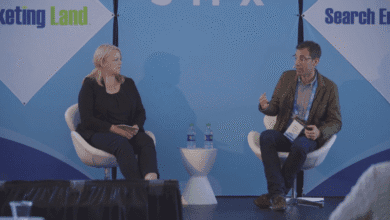Boost Your PPC Campaigns with CRM Data Insights

▼ Summary
– CRM data is crucial for PPC advertisers to enhance their paid media strategy by leveraging customer information.
– Key CRM data points for B2B include job titles, industry, company size, and revenue, while for B2C, they include age, gender, location, product preferences, and customer lifetime value (CLV).
– Clustering analysis, particularly using the k-modes algorithm, helps organize CRM data to identify valuable audience segments for precise targeting.
– Three main strategies to leverage CRM data for PPC advertising are refining targeting, crafting tailored ad messaging, and creating relevant website content.
– Regularly updating CRM data analysis is essential to maintain effective advertising campaigns and maximize ROI.
In the realm of digital marketing, the importance of data cannot be overstated. Yet, many PPC advertisers fail to take full advantage of one of their most valuable resources: CRM data. Whether you’re targeting businesses or consumers, your CRM system holds a wealth of customer information that can significantly boost your paid media strategy.
To enhance efficiency and scale, prioritize critical CRM data points such as:
- For B2B: Job titles, industry, company size, and revenue.
- For B2C: Age, gender, location, product preferences, and customer lifetime value (CLV).
This article delves into how to utilize CRM data for refining targeting, crafting effective ad messaging, and creating more relevant website content.
Evaluate CRM Data through Clustering Analysis
To leverage insights from your CRM, you need a structured approach to organizing your data. Clustering analysis, which groups similar customers based on shared characteristics, is one effective method. The k-modes algorithm, an extension of k-means, is particularly useful as it replaces cluster averages with frequently occurring attributes, ensuring precise targeting.
This method helps identify primary audience segments that are most valuable to your business. Examples include:
- B2B: Clustering leads by job role, industry, company size, and revenue.
- B2C: Segmenting customers by demographics, interests, purchase behavior, CLV, and engagement levels.
This analysis provides actionable insights to shape your advertising strategy and focus on the right audiences.
3 Ways to Leverage CRM Data for PPC Advertising
After identifying key audience clusters, these insights can be implemented across platforms like Google Ads, LinkedIn Ads, and Meta Ads. Here are three main strategies:
1. Refine Targeting Without Hyper-Fragmenting Ad Accounts
Over-segmenting campaigns can lead to inefficient ad spend and limited insights. Instead, use CRM data to strategically refine audience targeting:
- LinkedIn and Facebook audiences: Upload CRM data to create custom and lookalike audiences, targeting high-value prospects similar to your current customers.
- Keyword themes in Google Ads: Use CRM insights to optimize your keyword strategy based on job titles, industries, or pain points that resonate with your customers.
2. Craft Messaging with Ads Geared Toward Primary Personas
Different customer segments respond to different messages. Utilize CRM data to tailor ad copy, imagery, and calls to action to match your primary personas:
- B2B example: If C-suite executives respond best to expert content, create ads promoting whitepapers or exclusive webinars.
- B2C example: If younger demographics prefer discounts while older customers value premium quality, adjust your ad messaging accordingly.
3. Creating Relevant Website Content
Your website should reflect the personas you’re targeting, making it crucial to use CRM insights for optimization:
- B2B: For enterprise-level customers, ensure your website has dedicated pages for enterprise solutions and case studies, with messaging tailored to their specific needs.
- B2C: If young professionals interested in sustainability are key, highlight eco-friendly product attributes and include social proof from like-minded customers.
These insights should permeate beyond landing pages to ensure brand positioning across the site aligns with the common themes identified from different personas.
Final Thoughts
Your CRM is more than just a database; it’s a strategic asset that can transform your paid media performance. By analyzing customer data through clustering, refining targeting, crafting tailored ad messaging, and ensuring your website content aligns with your audience, you can drive more effective advertising campaigns.
Remember, this initiative isn’t one-time. Regularly update your analysis based on how quickly new data enters your CRM, any data cleanup projects, and new product launches that require fresh insights. Don’t let your CRM data go to waste—use it to enhance your paid campaigns and increase your ROI.
(Source: Search Engine Land)






